Beijing Introduced Low Nitrogen Transformation Subsidy, Tungsten Trioxide Denitration Catalyst Boosts Emission Reduction
- Details
- Category: Tungsten's News
- Published on Wednesday, 15 June 2016 19:50

| Tungsten Oxide Supplier: Chinatungsten Online www.tungsten-oxide.com | Tel.: 86 592 5129696; Fax: 86 592 5129797;Email:sales@chinatungsten.com |
| Tungsten News & Prices, 3G Version: http://3g.chinatungsten.com | Molybdenum News & Molybdenum Price: http://news.molybdenum.com.cn |
China Tungsten Industry Association Held Bureau Meetings in Chaozhou
- Details
- Category: Tungsten's News
- Published on Wednesday, 15 June 2016 15:47
In June 7, 2016, China Tungsten Industry Association, the sixth of nine Bureau meetings held in Chaozhou. The meeting analyzed the current tungsten market situation and reached consensus on stable market. Besides, the meeting examined and adopted the China Tungsten Industry 13th Five Years Plan and other relevant resolutions. The meeting was chaired by the vice president, executive chairman, the party committee secretary of Xiamen Tungsten Co., Ltd. Zhuang Zhigang.
China State Department counselor, president of the China Nonferrous Metals Industry Association and China Tungsten Industry Association, Chen Quan Xun attended the meeting and made a speech. He stressed that the members of the Bureau should play a leading role for stable tungsten market, they should enhance communication, unity, play attention to the interest of the whole, joint efforts to control market risks, resist the vicious competition, and maintain market running. He said that this year, the external environment for non-ferrous metal industry development is still very complicated, so we should correctly understand the current situation and grasp any chance for increasing scientific and technological innovation, promoting industrial upgrading. He asked CTIA (China Tungsten Industry Association) should strengthen self-discipline and in-depth research firmly the principal contradiction and hot issues of tungsten industry. Besides, they should operate innovation activities for government, industries and enterprises development. The first Secretary-General Liu Liangxian introduced the tungsten industry economic performance of this year and the china tungsten industry 13th five years development plan (draft).
The meeting considered the resolution of council member adjustment. The meeting agreed Lianpingxian zhujiang kuangye co., Ltd. general manager Ma Songgui to succeed Zhang Zheng, Wendeng, Wendeng Zhengxing Tungsten Industry Co. chairman Gong Shaohua to succeed Liu Yuxin, and Ganzhou Gannan Tungsten Industry Co., Ltd. general manager Zhu Bo to succeed Qi Shen.
The meeting also considered the resolution of development members and the withdrawal the membership and agreed to develop Ganzhou Haichuang Tungsten Industry Co., Ltd., Comin Ganzhou Nonferrous Metal Materials Co., Ltd. as member of the CTIA, respectively anchored smelting branch. On the other hand, there are three companies want to withdraw the membership, including Zhuzhou Lizhou Cemented Carbide Co., Ltd., Changsha Huaxin alloy Electric Engineering Co., Ltd., Shanghai tool works Co., Ltd.. Further, the meeting also approved the China tungsten industry 13th five years development plan.
The meeting discussed the tungsten industry current situation and exchanges the market information. The participants agreed that this year the tungsten concentrate production will significant decrease and the companies who produced tungsten finished products inventories remain at low level. Besides, the end demand overall is getting better. After the meeting, many tungsten companies agree to strengthen coordination and communication, to prevent and control common risk, and continue to take control of production, reducing production, reducing sales, increase business purchase and storage and other measures for tungsten market healthy and stable development.
During the meeting, Guangdong, Chaozhou, Secretary of municipal party committee Li Shuihua met with CTIA chairman Chen Quanxuan and other representatives participating in the conference. Li Shuihua introduced Chaozhou economic and social development situation, hoping China Nonferrous Metals Industry Association can play an important role for industry stable development, providing advanced resources and information and as a bridge for industry member to communication. In addition, in industrial level, technology introduction, marketing and other aspects it can give Chaozhou non-ferrous metals industry more help. Chen Quanxun said that in recent years Chaozhou has made great achievements in accelerating urban development, promoting industrial restructuring and upgrading and other fields. China non-ferrous metal industry should better learn from the advanced experience of the all around the country, focusing on strengthening concept innovation and technological innovation, promoting recycling of resources for industry development to break a new path. CTIA and non-ferrous Tungsten Industry Association will serve as a bridge to promote associations and related enterprises to strengthen the cooperation with the Chaozhou, to promote Chaozhou economic development.
Tungsten market: many manufactures of tungsten finished products willing to hold the price of tungsten finished products at the high level to make tungsten market health and stable development, but the price does not rise and the market doesn’t recovery; tungsten raw materials and tungsten finished products price continues to fall down slight and many buyer want to wait for market recover, so the transaction activity is low.
Rare Earth Market: in this week the rare earth market is running smoothly, many businesses continue to wait and there is not significant adjustment on rare earth price. Many manufacturers expected that the State Reserve Bureau plan will make the price go up, so they reluctant to sale the product at low price. Besides, the finished product manufacturers have low willing for stock up. The market is unstable, so many buyers can not make a decision for purchasing and still want to wait and see until the market is clear.
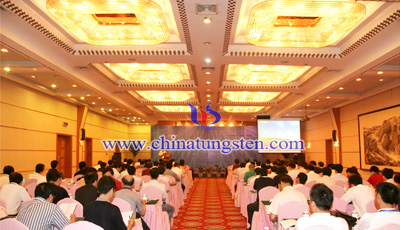
| Tungsten Supplier: Chinatungsten Online www.chinatungsten.com | Tel.: 86 592 5129696; Fax: 86 592 5129797;Email:sales@chinatungsten.com |
| Tungsten News & Prices, 3G Version: http://3g.chinatungsten.com | Molybdenum News & Molybdenum Price: http://news.molybdenum.com.cn |
Nano Tungsten Carbide Has Some Difficulties in Industrialization
- Details
- Category: Tungsten's News
- Published on Tuesday, 14 June 2016 16:54
Compared with tungsten carbide material with common grains (micron scale), nano-crystalline tungsten carbide has remarkable improvements in density, hardness, fracture toughness and wear resistance, etc. This is due to the grain size reaches nano scale, the volume of the grain decreases, the specific surface area becomes larger, the arrangement of atoms on the interface relative out of order, it will immigrate easily under deformation external interference and the material shows excellent toughness and ductility. Especially in nano tungsten carbide cutting tools, nano-scale microstructure phase due to the size effect, the grain boundary area increases, anti-crack propagation resistance improved, which is beneficial for obtaining excellent mechanical properties and machinability.
However, since the difficulties in manufacturing process, higher cost and nano grains grow easily in the process of sintering, tungsten carbide less than 100nm can not reach the level of industrial production. So the researchers have found that add nano grains in tungsten carbide matrix with fine grains, it can effectively improve the hardness and toughness of the matrix materials. Now the enterprises use nano composite reinforced method to improve the properties of tungsten carbide material with fine grains. The principle of nano tungsten carbide composite strengthening mechanism is nano grain dispersed in the matrix has dispersed toughening effect. When added to a high elastic modulus of the matrix material in the second phase particles (nano particles), these particles in the matrix material by stretching action will prevent the transverse cross-section contraction, but to achieve the same substrate transverse shrinkage, the increase in the large longitudinal tensile stress, so that the material can consume more energy, toughening effect works. At the same time, high modulus particles crack can act as a "pinning" effect, so that the crack deflection, deviation, thereby dissipating power forward crack, so the toughening effect works. In addition, the dispersed nano grains in tungsten carbide matrix can inhibit the growth of carbide grains during the sintering process and greatly improve the mechanical properties of tungsten carbide materials.
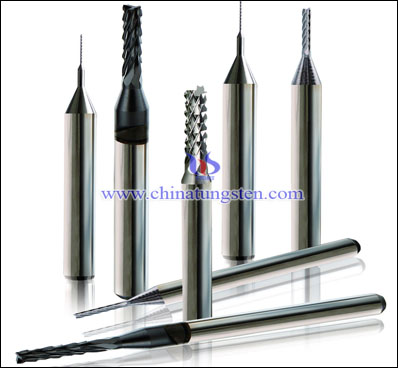
| Tungsten Carbide Supplier: Chinatungsten Online tungsten-carbide.com.cn | Tel.: 86 592 5129696; Fax: 86 592 5129797;Email:sales@chinatungsten.com |
| Tungsten News&Tungsten Prices, 3G Version: http://3g.chinatungsten.com | Molybdenum News & Molybdenum Price: http://news.molybdenum.com.cn |
Tungsten Trioxide Denitration Catalyst - Air Pollution Controlling Sharp Weapon
- Details
- Category: Tungsten's News
- Published on Monday, 13 June 2016 18:35
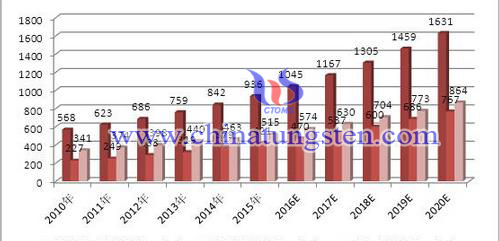
| Tungsten Oxide Supplier: Chinatungsten Online www.tungsten-oxide.com | Tel.: 86 592 5129696; Fax: 86 592 5129797;Email:sales@chinatungsten.com |
| Tungsten News & Prices, 3G Version: http://3g.chinatungsten.com | Molybdenum News & Molybdenum Price: http://news.molybdenum.com.cn |
China Developed High-Capacity, Fast-Charge, Electrochromic Battery Uses Tungsten Oxide
- Details
- Category: Tungsten's News
- Published on Monday, 13 June 2016 18:26

| Tungsten Oxide Supplier: Chinatungsten Online www.tungsten-oxide.com | Tel.: 86 592 5129696; Fax: 86 592 5129797;Email:sales@chinatungsten.com |
| Tungsten News & Prices, 3G Version: http://3g.chinatungsten.com | Molybdenum News & Molybdenum Price: http://news.molybdenum.com.cn |
China-South Korea Signed Free Trade Agreement, Tungsten Products Tariffs Reduced by 5%
- Details
- Category: Tungsten's News
- Published on Monday, 13 June 2016 18:15
China-South Korea after signed FTA, up to 20 years, China zero-tariff products will achieve up 92% of tax items and achieve up 91% of imports. Korean and China 90% products tax items and 85% trade volume all achieve linearization, namely the tariff is zero. China to reduce some clothing, footwear, skin care products, diapers and other consumer goods import tariffs and the average range fell more than 50%. The agreement covers trade in goods, services, investment and rules, a total of 17 areas, including the e-commerce, competition policy, government procurement, environment and other 21st century economic and trade issues. In terms of tungsten products, South Korea imported tungsten products form China can enjoy most-favoured-nation clause and the tariff of tungsten products reduced by 5%.
MFN is an important provision of trade treaty, which refers to contracting party A present and future giving all the privileges, concessions and exemptions to any third party and should give to the contracting party B. The MFN principle requires members to grant each other most-favored among parties, namely the GATT contracting principle is: a member of the trade preferences and licensing another party member must be automatically extended to all other members. As the basic and the most important principle of GATT, the MFN principle to regulate trade in goods between the members of the party, to promote the expansion of international trade and development played an important role.
The treatment range of MFN is large, and the most important is tariff treatment of the major import and export commodities, including imports, exports or transit goods and other taxes; there are some strict customs regulations, procedure and fees about merchandise import, export, transit, warehousing and change ships. In the Treaty of Commerce and Navigation, the scope of the MFN clause applies even bigger, the contracting state into the ship and its cargo, and pulled out all kinds of taxes, fees and formalities at berth are included.
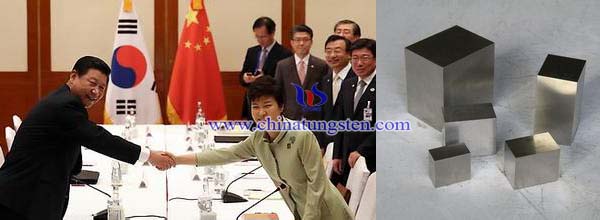
| Tungsten Supplier: Chinatungsten Online www.chinatungsten.com | Tel.: 86 592 5129696; Fax: 86 592 5129797;Email:sales@chinatungsten.com |
| Tungsten News & Prices, 3G Version: http://3g.chinatungsten.com | Molybdenum News & Molybdenum Price: http://news.molybdenum.com.cn |
China Made a Process in High-performance Tungsten Carbide
- Details
- Category: Tungsten's News
- Published on Monday, 13 June 2016 15:04
Chinese R&D team in tungsten carbide has a breakthrough in the research and development of high-performance tungsten carbide composite material, it mainly includes:
1. Phase controlled particle size adjustable nano WC-Co composite powder scale preparation techniques: It takes tungsten-cobalt oxide and carbon as raw material, and uses solid-phase synthesis in-situ reaction to synthesize ultrafine or nano WC-Co composite powder. It has many advantages, such as simple operation, short process, Low-cost equipment, energy saving and so on. The synthesis of composite powder has high purity, low oxygen content, Co content within a wide range of 6-20wt% is accurate and adjustable, which reached on the current international quality ultrafine nano WC-based powder control standards.
2. High liquidity, nano-structure WC-based spraying powder scale preparation techniques: It based on the principle of spray-drying and combines with heat treatment, which not only maintains the characteristics of nano structure, but also can fabricate the thermal spray powder with high fluidity. So it gets to the root of nano powder thermal spraying at high temperature flame flow easily decomposed decarbonization, which is a difficulty in international technical fields.
3. High density, high surface quality and technical preparation of carbide wear and corrosion coating: The technology synergistically adjust the initial powder component, thermal spray granulation and agglomeration process, by a combination of carbon content design, unique heat treatment process, recombinant size, thermal spraying process parameters optimization to fabricate high-performance nano-structure carbide coating. The coating having a porosity of <0.5% of a high density; compared with the conventional micro structure, the surface quality has significantly improved, the surface roughness Ra <0.5m.
4. Ultrafine size nano-crystalline tungsten carbide block preparation: The technology develops a low-temperature region slow heating rate, low pressure, high temperature rapid heating region segmentation, greater pressure, does not heat the unique field effect sintering process. And produces nano tungsten carbide block with average grain size of 60-100nm. The average grain size of 60nm dense nano-crystalline alloy is the smallest grain size reported so far around the world. Meanwhile, nano-crystalline tungsten carbide sintered material can meet the requirements of high hardness and high fracture toughness.
| Tungsten Carbide Supplier: Chinatungsten Online tungsten-carbide.com.cn | Tel.: 86 592 5129696; Fax: 86 592 5129797;Email:sales@chinatungsten.com |
| Tungsten News&Tungsten Prices, 3G Version: http://3g.chinatungsten.com | Molybdenum News & Molybdenum Price: http://news.molybdenum.com.cn |
China Has a Breakthrough in High-performance Tungsten Carbide
- Details
- Category: Tungsten's News
- Published on Monday, 13 June 2016 15:02
China tungsten carbide industry has 60 years of development history, which has been regarded as a big country of carbide. According to carbide branch of CTIA (China Tungsten Industry Association) statistics, the last three years (2012-2014) of the annual output of domestic carbide 2.2-2.5 million tons, which more than 40% of global output. Although the production and consumption of tungsten carbide of our country is at the leading place around the world, as far as the level of manufacture and technology, we still fall behind. In terms of the plateau of domestic tungsten carbide industries development, we developed many research projects and establish a special carbide R&D team, after more than ten years of basic research and technology development to study ultra-fine carbide nano-scale manufacturing equipment and engineering application of a series of new technologies, and work closely with companies to develop over carbide materials and high value-added products toward high-end applications development.
For WC-based tungsten carbide, compared with conventional coarse grain (the average grain size about 13μm), tungsten carbide with ultrafine grain (the average grain size about 200-500nm) and nano grain (the average grain size lower than 200nm) has high hardness, high strength, high fracture strength and excellent wear and corrosion resistance, which becomes the indispensable material for drilling, cutting and milling process. Since late 1990s, nano tungsten carbide has been emerged many new processes. In recent years, ultra-fine carbide and nano-scale preparation and industrial applications become international attention, reflecting the forefront of competitive research focus, which experienced a period of many preparation methods of nano carbide change of evolution. Such as sol - gel / co-precipitation method, a plasma method, but they are limited to use in nano WC powder synthetise in laboratory; spark plasma sintering, high pressure and so consolidation is limited to the preparation laboratory simple shape and small three-dimensional nano-polycrystalline material; Complex spray conversion method steps, the high cost of the process, demanding precision control, which greatly limits the technology in the manufacture of nano-WC-based powder application.
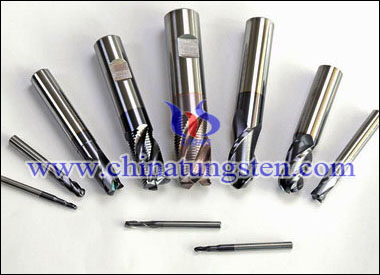
| Tungsten Carbide Supplier: Chinatungsten Online tungsten-carbide.com.cn | Tel.: 86 592 5129696; Fax: 86 592 5129797;Email:sales@chinatungsten.com |
| Tungsten News&Tungsten Prices, 3G Version: http://3g.chinatungsten.com | Molybdenum News & Molybdenum Price: http://news.molybdenum.com.cn |
Tungsten Trioxide - Graphene Photocatalyst, Nemesis of Dye Pollutant
- Details
- Category: Tungsten's News
- Published on Sunday, 12 June 2016 19:23

| Tungsten Oxide Supplier: Chinatungsten Online www.tungsten-oxide.com | Tel.: 86 592 5129696; Fax: 86 592 5129797;Email:sales@chinatungsten.com |
| Tungsten News & Prices, 3G Version: http://3g.chinatungsten.com | Molybdenum News & Molybdenum Price: http://news.molybdenum.com.cn |
Minmetals Published Tungsten Market Guide Price
- Details
- Category: Tungsten's News
- Published on Sunday, 12 June 2016 18:04
Ganzhou Tungsten Industry Association yesterday announced the March 2016 market forecast average price of tungsten: tungsten concentrate 75,000 RMB/ton, APT 105,000.00 RMB/ton, middle size tungsten powder 168 RMB/kg. Compared to February, the price of tungsten concentrates unchanged, but APT raised 2,000 RMB for each ton and the middle size of tungsten powder raised 4 RMB for each kg. This showed Ganzhou Tungsten Industry Association has optimistic attitude about the spring tungsten market.
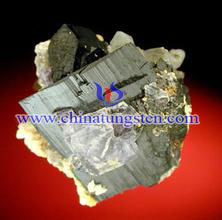
Following Minmetals tungsten market guide price published in May, now re-released new tungsten market guidance in June, including tungsten concentrate 75,000/ton, scheelite 74,000/ton. Compared with the May guidance, the chain relative ratio were down 3,000 for each ton. And difference with May, this time Minmetals guide price of tungsten concentrate is similar to Ganzhou Tungsten Association tungsten concentrate forecast average price. Minmetals tungsten market guide price can be slightly higher than recent market transaction price, also showed Minmetals willingness to stabilize tungsten market.
The manufacturers of raw materials has optimistic attitude about tungsten market, so they reluctant to sale raw material and want to increase the price, but affected by low tungsten finished products demand the price acceptance is low and the turnover is limited. But supported by supply-side reform, mainly China domestic mining enterprises to suspend shipments, based on the policy is expected to continue to bring some benefit, so in the short-term the price of tungsten is difficult to fall down and will slight increase. 65% tungsten concentrate purchase price is not less than 75,000 RMB/ton and APT purchase price is not less than 115,000.00 RMB/ton. Besides, the market is still upside.
China's economic is gradually recovery, but tungsten finished products industry demand is shrinking, and the industry has been going on downturn for a long time. The end of January this year, eight large tungsten enterprises of China met in Chaozhou decided in 2016 tungsten concentrate reduction of output more than 15%. Reduced supply is good for industry rebound.
| Tungsten Metals Supplier: Chinatungsten Online www.tungsten.com.cn | Tel.: 86 592 5129696; Fax: 86 592 5129797;Email:sales@chinatungsten.com |
| Tungsten News & Prices, 3G Version: http://3g.chinatungsten.com | Molybdenum News & Molybdenum Price: http://news.molybdenum.com.cn |


 sales@chinatungsten.com
sales@chinatungsten.com